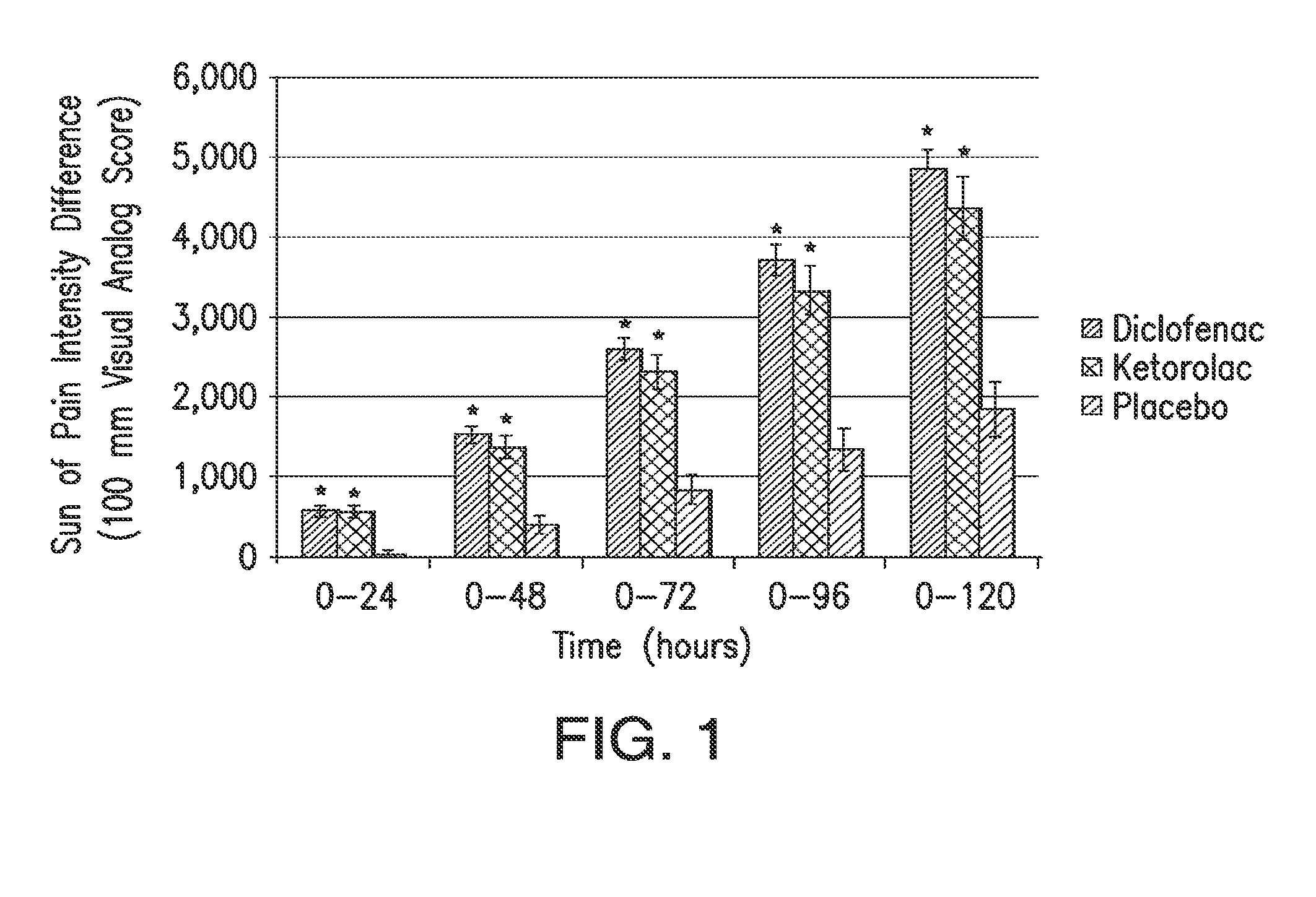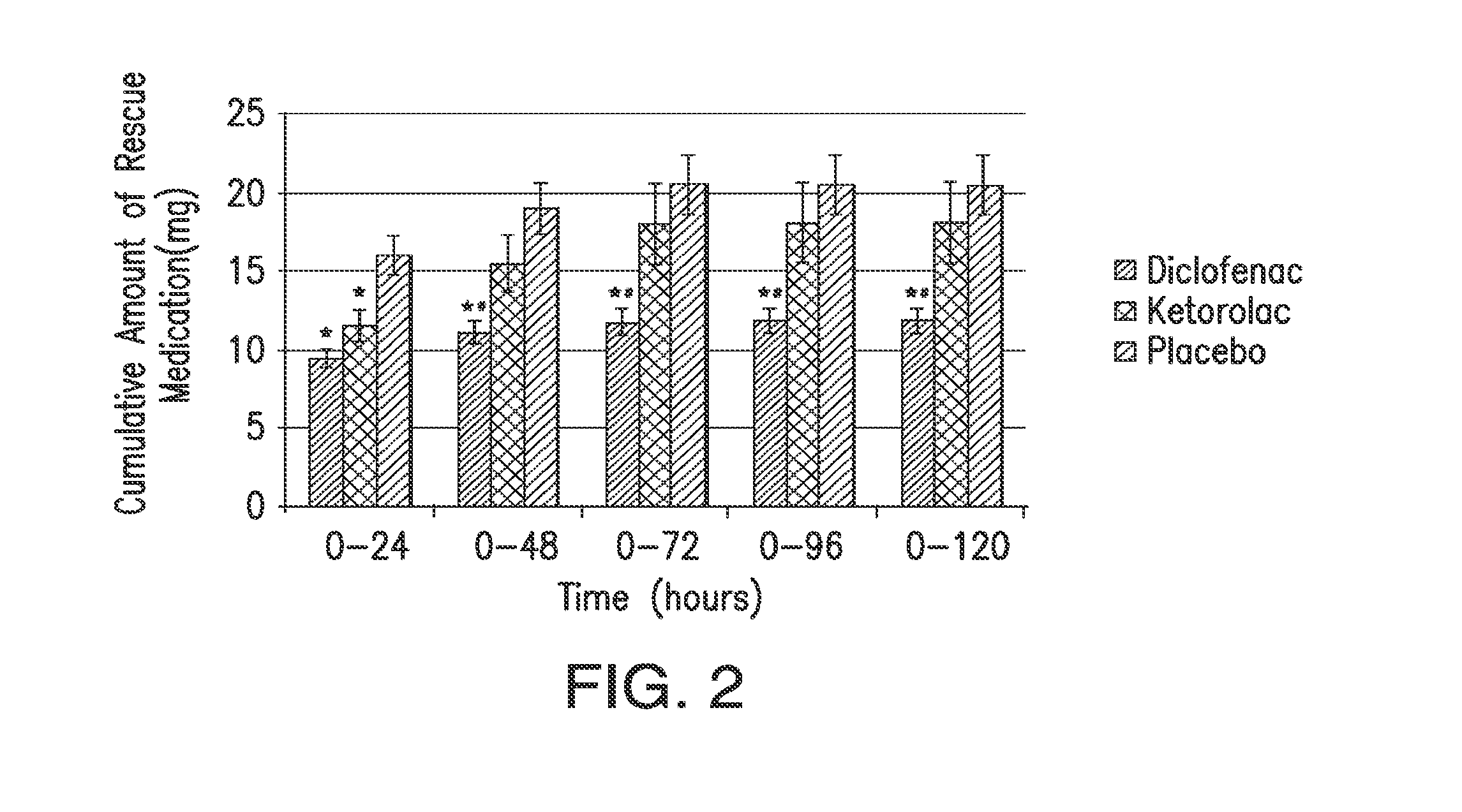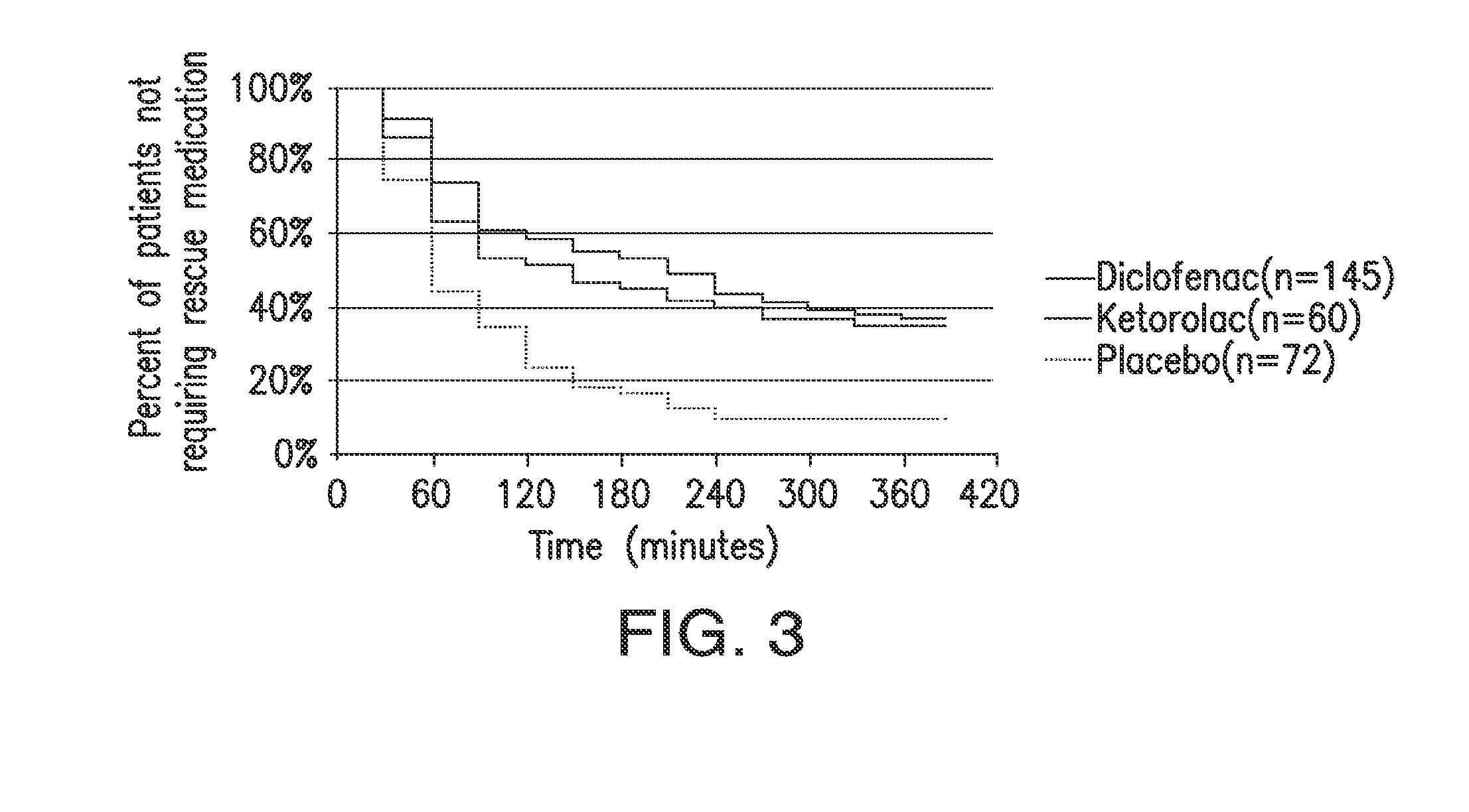Methods of treating pain
a pain and pain technology, applied in the field of pain treatment methods, can solve the problems of not all nsaids are able to achieve clinically meaningful reductions in opioid requirements, delay patient discharge, and significant deleterious effects of drugs, so as to reduce the intensity of pain, and reduce the amount of rescue medication
- Summary
- Abstract
- Description
- Claims
- Application Information
AI Technical Summary
Benefits of technology
Problems solved by technology
Method used
Image
Examples
example 1
IV Diclofenac for Treatment of Acute Moderate to Severe Pain after Orthopedic Surgery
[0083]A 277-patient, multicenter, multiple-dose, multiple-day, randomized, double-blind, active- and placebo-controlled, parallel-group study was conducted on patients who had undergone orthopedic surgery. Patients were randomly assigned to diclofenac, ketorolac, or placebo (2:1:1 ratio). The patients selected for the study had moderate to severe pain within 6 hours postoperatively, defined as pain intensity of at least 50 mm on a 0-100 visual analog scale (VAS).
[0084]Randomization was stratified by risk group at baseline. The groups were high-risk, non-high-risk, or higher-weight, which was greater than 210 lbs., or 95 kg. Randomization was also stratified by anticipated stay between a long stay, which was longer than 24 hours, versus a shorter stay. The high-risk patients weighed less than 110 lbs. (50 kg), were 65 years or older, were undergoing medical ulcer therapy, or had a Child-Pugh score 6-...
example 2
IV Diclofenac for Treatment of Acute Moderate to Severe Pain after Abdominal or Pelvic Surgery
[0116]A 331 multicenter, multiple-dose, multiple-day, randomized, double-blind, parallel-group study was conducted on patients who had undergone abdominal or pelvic surgery. Patients were randomly assigned to 18.75 mg of diclofenac, 37.5 mg of diclofenac, 30 mg ketorolac, or placebo (1:1:1:1 ratio). The diclofenac formulation was Dyloject™. The patients selected for the study had moderate to severe pain within 6 hours postoperatively, defined as pain intensity of at least 50 mm on a 0-100 VAS.
[0117]Over the first 48 hours after study drug initiation, the mean sum of pain intensity differences was significantly better for each of the active treatments compared with those receiving placebo and rescue morphine, as shown in Table 1. The results were consistent regardless of baseline pain intensity. There were no significant differences between the low dose 18.75 mg HPβCD diclofenac group and th...
example 3
IV Diclofenac for Treatment of Post-Operative Pain in a Broadly Representative Population
[0130]A 971-patient, open-label, single-arm prospective trial was conducted to evaluate the safety of delivering small-volume bolus injections of HPβCD diclofenac over the course of two to three days in patients with acute postoperative pain following major orthopedic surgery, abdominal / pelvic surgery, or other surgery. The major orthopedic surgeries were total hip, total knee, spine, shoulder, ankle, and soft tissue surgeries. The major abdominal / pelvic surgeries were hysterectomy, laparotomy, colectomy, salping-oophorectomy, inguinal hernia, and myomectomy surgeries. Of the 971 patients, 765 (78.8% of enrolled subjects) patients were concomitantly on anticoagulants such as heparin, low-molecular-weight heparin, warfarin, and aspirin. Over a third of the subjects were at least 65 years old (37.8% of enrolled subjects). Approximately a third of the subjects, 335 patients, weighed at least 210 lb...
PUM
| Property | Measurement | Unit |
|---|---|---|
| time | aaaaa | aaaaa |
| time | aaaaa | aaaaa |
| time | aaaaa | aaaaa |
Abstract
Description
Claims
Application Information
 Login to View More
Login to View More - R&D
- Intellectual Property
- Life Sciences
- Materials
- Tech Scout
- Unparalleled Data Quality
- Higher Quality Content
- 60% Fewer Hallucinations
Browse by: Latest US Patents, China's latest patents, Technical Efficacy Thesaurus, Application Domain, Technology Topic, Popular Technical Reports.
© 2025 PatSnap. All rights reserved.Legal|Privacy policy|Modern Slavery Act Transparency Statement|Sitemap|About US| Contact US: help@patsnap.com



